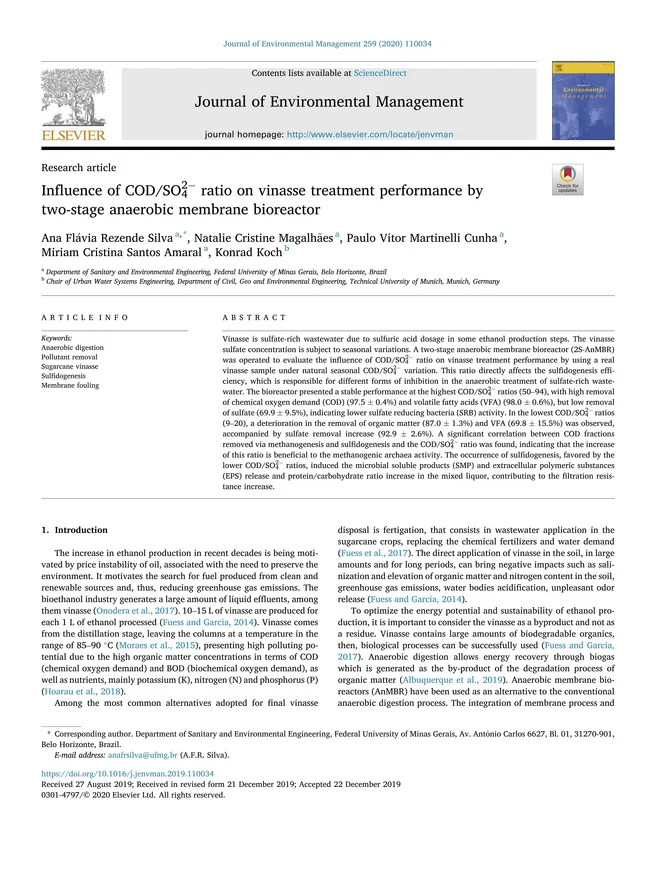Vinasse is sulfate-rich wastewater due to sulfuric acid dosage in some ethanol production steps. The vinasse sulfate concentration is subject to seasonal variations. A two-stage anaerobic membrane bioreactor (2S-AnMBR) was operated to evaluate the influence of COD/SO42− ratio on vinasse treatment performance by using a real vinasse sample under natural seasonal COD/SO42− variation. This ratio directly affects the sulfidogenesis efficiency, which is responsible for different forms of inhibition in the anaerobic treatment of sulfate-rich wastewater. The bioreactor presented a stable performance at the highest COD/SO42− ratios (50–94), with high removal of chemical oxygen demand (COD) (97.5 ± 0.4%) and volatile fatty acids (VFA) (98.0 ± 0.6%), but low removal of sulfate (69.9 ± 9.5%), indicating lower sulfate reducing bacteria (SRB) activity. In the lowest COD/SO42− ratios (9–20), a deterioration in the removal of organic matter (87.0 ± 1.3%) and VFA (69.8 ± 15.5%) was observed, accompanied by sulfate removal increase (92.9 ± 2.6%). A significant correlation between COD fractions removed via methanogenesis and sulfidogenesis and the COD/SO42− ratio was found, indicating that the increase of this ratio is beneficial to the methanogenic archaea activity. The occurrence of sulfidogenesis, favored by the lower COD/SO42− ratios, induced the microbial soluble products (SMP) and extracellular polymeric substances (EPS) release and protein/carbohydrate ratio increase in the mixed liquor, contributing to the filtration resistance increase.
